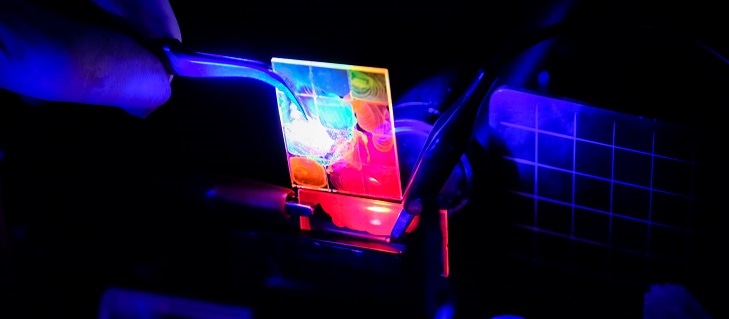Nov 29 2019
Researchers from Nanyang Technological University (NTU), Singapore, have devised a method to make colloidal quantum dots (CQDs) yield laser light using an electric field.
 Image Credit: Nanyang Technological University
Image Credit: Nanyang Technological University
CQDs are semiconductor nanoparticles that can produce bright and saturated colors of light efficiently, which are used to create display screens of various electronic devices.
Although CQDs should be favorable as laser materials, they are still not viable as they have to be driven by another source of light energy—a technique called optical pumping. This makes them extremely bulky for use in semiconductor electronics.
In the recent past, scientists have tried different methods to allow CQDs to be easily used in lasers, including electrochemical techniques or chemical doping. These methods necessitate the use of extremely strong chemical solvents or oxygen-free surroundings in their production, and thus have been restricted to laboratory-scale experiments.
In a paper published in Science Advances, NTU Assistant Professor Steve Cuong Dang, along with PhD student Yu Junhong, has shown how an electric field can enable CQDs to produce laser light while using just a fraction of the energy conventionally needed to power a laser.
During their experiments, the NTU researchers embedded CQDs between two electrodes, offering an electric field to regulate and alter the properties within the CQDs. By exploiting these properties, the researchers reduced the energy threshold required for lasing by about 10%, thus moving CQD lasers closer to reality.
This decrease in threshold is the first time scientists have reduced it using an electric field, rather than difficult-to-use electrochemical techniques.
The ability to develop economical, small-size lasers that are “electrically driven” in a broad range of colors is the holy grail for several optical and optoelectronic scientists. Lasers are the fundamental technology for several industries, including security, medical, and consumer electronics, and are vital to the development of laser TVs.
Our successful experiment brings us one step closer towards developing single-material full-colour lasers that can be electrically pumped. That achievement would eventually make it possible to put lasers on chip integrated systems used in consumer electronics and the Internet of Things (IOTs).
Steve Cuong Dang, Assistant Professor, School of Electrical and Electronic Engineering, Nanyang Technological University
Benefits of Colloidal Quantum Dots
CQDs can be easily and cost-effectively developed through simple liquid-phase chemical syntheses, and their electronic and optical properties can be changed and regulated by changing the particle size.
Colloidal nanomaterials are appealing to laser manufacturers because of their tunable emission color, low cost, and high-emission efficiency. However, making them lase presently necessitates rapid, powerful, and coherent optical pumping, whereas electric pumping is weak, slow, and incoherent.
Along with his collaborators Prof Hilmi Volkan Demir and Assoc Wang Hong from EEE, and Prof Sum Tze Chien from the School of Physical and Mathematical Sciences, Asst Prof Dang demonstrated that applying an electric field reduces the lasing threshold of CQDs, and could result in practical electrically-pumped CQD lasers.
The next big challenge in laser research is to develop nanoscale lasers and integrate them into on-chip photonic devices and ultrasensitive sensors. This would bring significant impacts to modern society especially in data and information processing, that is driving the 4th industrial revolution. Achieving it would be a major advance within Singapore’s Industry 4.0 transformation.
Hilmi Volkan Demir, Professor, School of Electrical and Electronic Engineering, Nanyang Technological University
The team currently aims to explore more into the development of miniature CQD lasers on a chip and to collaborate with industry partners keen on developing the technology into proof-of-concept devices with practical applications.
This interdisciplinary study was financially supported by Ministry of Education, National Research Foundation Singapore (NRF), and Agency for Science, Technology and Research (A*STAR), and involved contribution of PhD student Yu Junhong and Dr Sushant Shendre, a research fellow at NTU’s LUMINOUS! Centre of Excellence for Semiconductor Lighting and Displays.